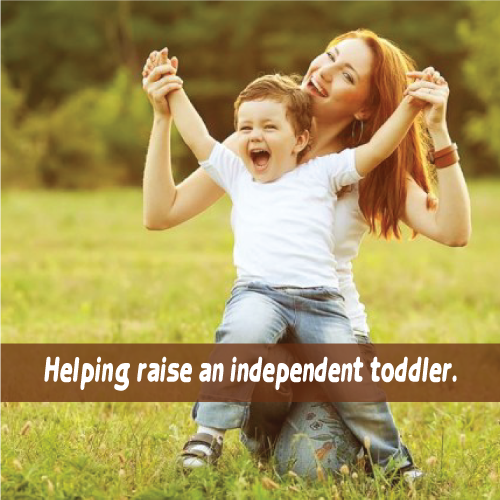Towards independence
Independent children are those who are no longer found holding on to their mother’s skirt. They have moved away from the mother in order to learn about their environment and about themselves. Mothers can make this process less painful for both, themselves and the child, first by taking the initiative to teach the child to be independent, and then learning to manage the child remotely during the period.
In a cartoon on parenthood, the sight of a mother duck, still carrying her overgrown duckling on her back makes her friend remark “For heaven’s sake, Martha, he has to learn to swim some day!” That pretty much sums up the need for mothers to teach their child to be independent.
A thin line
Mothers need to strike a fine balance between teaching a child how to be independent but still have enough control over the child to be able to supervise and intervene when necessary. The parents have to walk a fine line and make a choice between being overprotective and letting go totally. Being overprotective can hinder a child’s development, while not exercising enough control over the child may result in children hurting themselves or others or damaging property.
How to raise an independent toddler
Here are a few useful tips to help you raise an independent toddler.
- Take yourself out of the picture: Make your child follow you around the house and then hide yourself in some place. Call out to them from your hiding place before appearing before the child. This helps the child establish the connection between your voice and you. Even if they cannot see you, they know you are around to protect them.
- Separate baby not the mother: The way to help your baby to develop a healthy sense of self is by making the baby to separate from the mother and not the mother from the baby.
- Do it gradually: Your child is less likely to exhibit discipline problems when he/she is separated from the mother gradually and in a phased manner.
- Maintain the connection: The baby characteristics inside the toddler help the child to remain connected with the mother, while the toddler characteristics make the child feel more secure to go off on their own and explore.
- Provide the reassurance: A connected child is comforted by the picture of their mothers they carry in their minds which helps them to explore the world around them with more confidence and take baby steps towards a life with limited supervision from parents.
- Keep them posted about your absence: Saying ‘goodbye’ or ‘see you later’ when you have an errand to run and then reappearing as promised helps your child to treat your absences as facts of life and nothing to be worried about.
Children need to be reassured constantly that their parents are always around to keep an eye on them and protect them from dangers – real and imaginary. A confident child is more likely to be independent sooner by exploring their environment more vigorously. Like they say, they have to learn to do it sometime in their lives and sooner they are initiated into it, the better.
